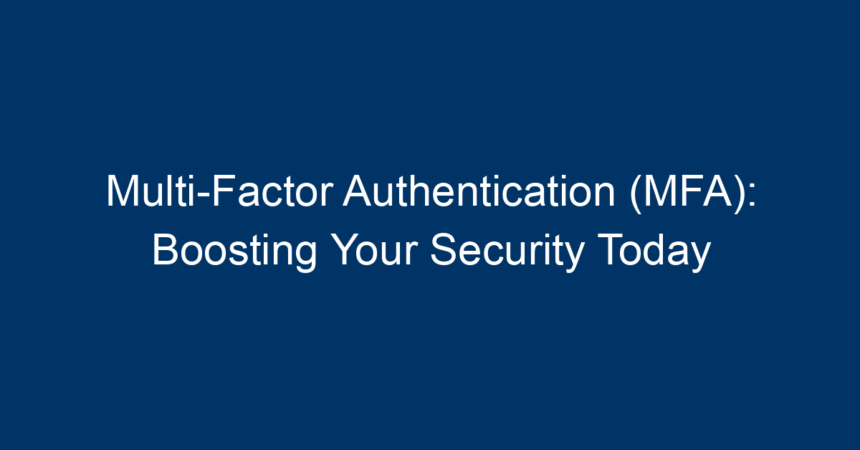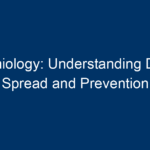In an era where cyber threats are increasingly sophisticated, safeguarding sensitive information has never been more critical. One of the most effective ways to enhance your security is through multi-factor authentication (MFA). This article dives deep into what MFA is, how it works, its benefits, and practical steps on how to implement it in your daily life.
Understanding Multi-Factor Authentication (MFA)
What is Multi-Factor Authentication?
Multi-factor authentication (MFA) is a security mechanism that requires two or more verification methods to confirm a user’s identity. Unlike traditional single-factor authentication, which typically only requires a password, MFA incorporates multiple layers of security, making unauthorized access significantly more difficult.
How Does Multi-Factor Authentication Work?
MFA combines three categories of authentication factors:
-
Knowledge factors: This includes something the user knows, such as passwords or PINs.
-
Possession factors: This involves something the user possesses, such as a smartphone or a hardware token that generates unique one-time codes.
- Inherence factors: This consists of something inherent to the user, like biometric data (fingerprints, facial recognition, etc.).
When logging in, users are prompted to provide credentials from at least two of these categories, creating a robust barrier against cyber threats.
Why Multi-Factor Authentication Matters
Reducing Risk of Unauthorized Access
The primary advantage of multi-factor authentication (MFA) is its ability to drastically reduce the risk of unauthorized access. Even if a malicious actor successfully obtains your password, they would still need a second form of verification to gain entry. This adds a formidable layer of security, especially for sensitive accounts, such as banking apps and online storage.
Compliance with Regulations
Organizations in regulated industries must comply with stringent security standards, such as the General Data Protection Regulation (GDPR) and the Health Insurance Portability and Accountability Act (HIPAA). Implementing MFA can help meet compliance requirements and protect sensitive data from breaches.
Enhanced User Trust
When users notice that an organization takes security seriously by implementing multi-factor authentication (MFA), their trust increases. Companies that prioritize the security of their user accounts often enjoy improved customer loyalty and brand reputation.
Types of Multi-Factor Authentication
SMS or Email Verification
One common method of MFA is verification codes sent via SMS or email. While this method is easy to implement and user-friendly, it is worth noting that it may not be the most secure option. Messages can be intercepted, making this method vulnerable to phishing attacks.
Mobile Authenticator Apps
Mobile authenticator apps like Google Authenticator or Authy generate time-based one-time passwords (TOTPs). These apps provide a more secure option than SMS as they do not rely on the cellular network.
Hardware Tokens
A hardware token is a physical device that generates authentication codes. Though robust, they can be lost or stolen, making physical security paramount. Many high-security environments prefer this method due to its reliability.
Biometric Authentication
Facial recognition and fingerprint scanning are leading the way in biometric authentication. These methods are user-friendly and virtually impossible to replicate, but they may require specialized hardware.
Implementing Multi-Factor Authentication
Steps to Enable MFA
-
Identify Critical Accounts: Start by identifying the accounts that contain sensitive information. This includes email, banking, and cloud storage accounts.
-
Check for MFA Options: Most reputable services provide an option for MFA. Check account security settings for MFA options and enable them.
-
Choose Your Second Factor: Select which type of second-factor authentication suits your needs best. If convenience is your priority, consider using SMS or mobile authenticator apps. If security is paramount, opt for hardware tokens or biometric authentication.
-
Keep Backup Codes: Many services generate backup codes in case you lose access to your second method of verification. Store these codes safely.
- Educate Yourself and Others: Familiarize yourself and your team with the benefits and procedures of multi-factor authentication (MFA). Knowledge is power when it comes to security.
Common Pitfalls to Avoid
-
Neglecting Updates: Always keep your devices and apps updated for optimum security performance.
-
Using Weak Passwords: MFA is not a replacement for good password practices. Always use strong, unique passwords in conjunction with MFA.
-
Disabling MFA: Avoid the temptation to disable this feature for convenience. A few extra seconds at login can save you from significant breaches.
- Ignoring Phishing Threats: MFA is powerful, but it’s not foolproof. Always be vigilant against phishing attempts that aim to compromise your credentials.
The Future of Multi-Factor Authentication
As technology evolves, so do cyber threats. Emerging trends such as machine learning and artificial intelligence are shaping the future of multi-factor authentication (MFA). Innovations like adaptive MFA analyze user behavior to add an extra layer of security intelligently.
The Role of Artificial Intelligence
AI can automatically detect anomalies in user behaviors and alert users or lock accounts as needed. This proactive security measure can significantly enhance the effectiveness of traditional MFA methods.
Integration with IoT Devices
With the rise of the Internet of Things (IoT), the integration of MFA into smart devices is becoming crucial. As these devices become more prevalent, securing them with MFA will help protect personal data from emerging threats.
Conclusion: Taking Action Today
Multi-factor authentication (MFA) is a crucial component of any robust security strategy. By implementing MFA across your critical accounts, you significantly increase your defense against cyberattacks.
Start today by identifying your essential accounts, enabling MFA, and choosing the method that best suits your needs. Educate yourself and those around you about the importance of MFA, and always stay updated on the latest security practices. Remember, security is not just a one-time setup—it’s an ongoing commitment to protecting your digital life.
Boost your security today with multi-factor authentication and take a decisive step toward a safer online experience.




